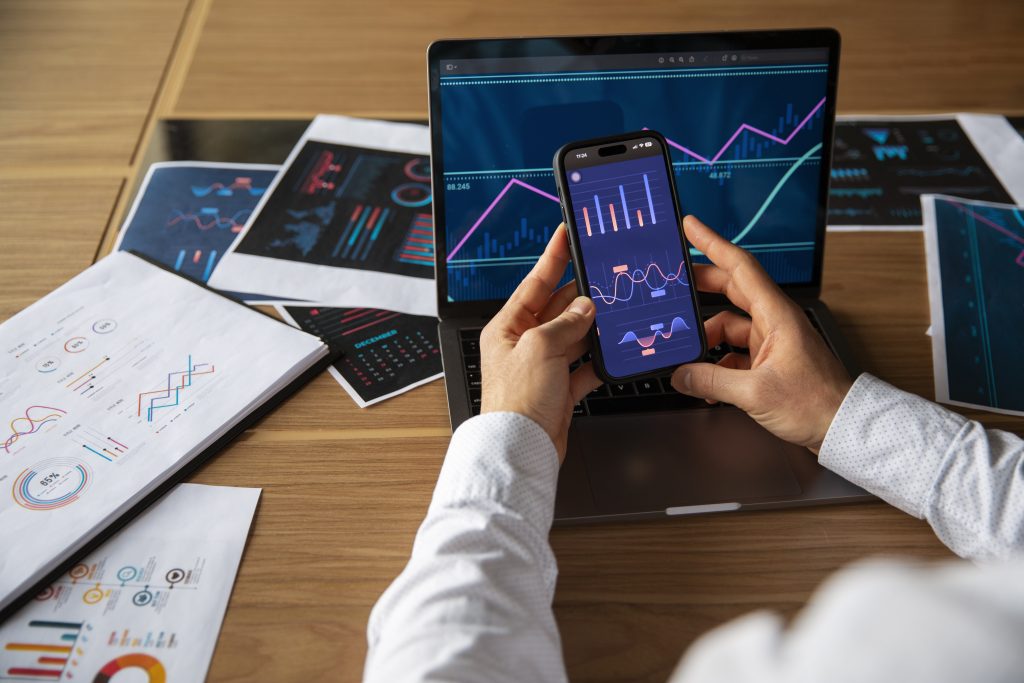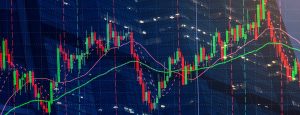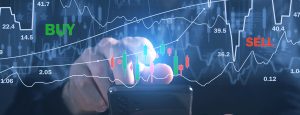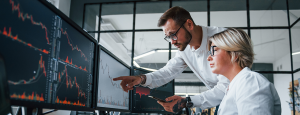Getting started with forex trading can feel overwhelming, especially when you’re navigating new terms like forex trading, commodities, and the commodity market. If you’re new to trading, this guide is here to simplify the process and build your confidence step-by-step. By the end of this guide, you’ll know what forex trading is, how it works, and how to get started.
What Is Forex Trading?
Forex trading, short for “foreign exchange trading,” is the buying and selling of different currencies to profit from the changes in their value. It’s the largest financial market in the world, with a daily trading volume exceeding $6 trillion.
Simply put, currencies are traded in pairs (e.g., EUR/USD), where you buy one currency (the base currency) and sell another (the quote currency). The goal? To correctly predict whether the value of the base currency will go up or down compared to the quote currency.
Why Choose Forex Trading?
Whether you’re new to investing or someone exploring the commodity market, forex trading offers several unique advantages over traditional stock or commodity trading.
24/5 Market Accessibility
Unlike traditional stock markets, the forex market runs 24 hours a day, five days a week. This flexibility allows you to trade at a time convenient for you, whether it’s during the London, Tokyo, or New York trading session.
High Liquidity
Forex is the most liquid market in the world. This means you can easily buy or sell a currency pair without delays, and pricing remains relatively stable even when there’s high trading activity.
Leverage Opportunities
Forex brokers often offer leverage, which allows you to control a larger position with a smaller amount of money. While this amplifies your profit potential, it’s important to use leverage carefully since it also increases the risk of losses.
Key Terms to Know Before You Start
If you’re entering forex trading as a beginner, understanding the jargon can make it less intimidating. Here are a few essential terms you need to know.
- Pip: A pip is the smallest price move a currency pair can make. It is usually the fourth decimal place (e.g., 0.0001).
- Spread: The difference between the buy (ask) price and the sell (bid) price.
- Leverage: The ability to trade a larger position size without having the full capital upfront.
- Margin: The minimum amount you need in your account to open a leveraged position.
- Base Currency and Quote Currency: For example, in EUR/USD, EUR is the base currency, while USD is the quote currency.
How to Start Forex Trading
Now that you’ve got a basic understanding, let’s explore how to get started step by step.
Step 1: Learn the Market
Knowledge is power in forex trading. Start by educating yourself on how the forex market works. Plenty of online courses, webinars, and books explain the basics of forex trading, technical analysis and strategies.
Step 2: Choose the Right Broker
Selecting a reputable forex broker is crucial. Look for brokers who are regulated by financial authorities, offer low spreads, fast execution, and robust trading platforms. Popular platforms like MetaTrader 4 (MT4) and MetaTrader 5 (MT5) also provide tools for analyzing the commodity market.
Step 3: Open a Trading Account
Most brokers offer demo accounts, allowing you to practice forex trading with virtual money. A demo account is an excellent way to explore different strategies risk-free before transitioning to a live account.
Step 4: Create a Trading Plan
Define your goals, risk tolerance, and strategies before entering the market. A solid trading plan helps you stay focused and disciplined, reducing emotional decision-making.
Step 5: Analyze the Market
Market analysis comes in two main forms:
- Fundamental Analysis: Focuses on economic indicators, like interest rates, employment reports, and GDP growth, which can impact currency values.
- Technical Analysis: Uses charts and past price trends to predict future movements.
Successful traders often blend these two approaches for more informed decisions.
Step 6: Start with a Small Investment
Begin with a small amount of capital you can afford to lose. This allows you to gain experience and confidence before increasing your position size.
The Role of Commodities in Forex Trading
Although forex trading is primarily about currency pairs, commodities like gold and oil often play a significant role due to their interdependence. For instance, countries heavily reliant on oil exports (e.g., Canada and Saudi Arabia) see their currencies fluctuate alongside commodity prices.
By closely monitoring the commodity market, forex traders can better predict price movements and refine their strategies to align with global events.
Tips for New Forex Traders
1. Stay Disciplined: Trading requires emotional control. Stick to your trading plan and avoid impulsive decisions based on market noise.
2. Use Risk Management Techniques: Set stop-loss and take-profit levels to limit your losses and secure your gains. Never risk more than 1–2% of your total trading capital in a single trade.
3. Keep a Trading Journal: Documenting each trade, including your strategy and outcome, helps you identify patterns and improve over time.
4. Start Small with Leverage: While leverage can amplify profits, it can also magnify losses. Use it cautiously, especially when you’re starting.
Common Mistakes to Avoid
1. Overtrading
Placing too many trades in a short time period can lead to emotional exhaustion and increased losses. Focus on quality over quantity.
2. Chasing Losses
Accept losses as part of the learning process. Doubling down on losing trades often leads to further setbacks.
3. Skipping Demo Accounts
Jumping straight into live trading without practice is a recipe for failure. Take advantage of demo accounts to refine your skills first.
Emerging Trends in Forex Trading
Technological advancements are introducing new possibilities for forex trading. For instance, algorithmic trading allows traders to automate their strategies, while artificial intelligence and machine learning enhance predictive analysis. Staying updated on these trends will give you a competitive edge in your forex trading endeavors.
Take the Leap into Forex Trading
Becoming proficient at forex trading is a gradual process requiring education, patience, and practice. By starting small and using the tools and techniques outlined in this guide, you can build a solid foundation for long-term success.
If you’re ready to explore forex trading further, open a demo account with a trusted broker and take your first step into this dynamic market. Who knows? Mastering forex trading might just be the key to achieving your financial goals.
Forex trading involves buying and selling currency pairs to profit from changes in their values, like EUR/USD. Traders predict if the base currency will strengthen or weaken against the quote currency.
It operates 24/5, offers high liquidity for fast transactions, and allows traders to use leverage to control larger positions with less capital.
Avoid overtrading, chasing losses, and skipping demo account practice. These mistakes often lead to emotional decisions and financial setbacks.



